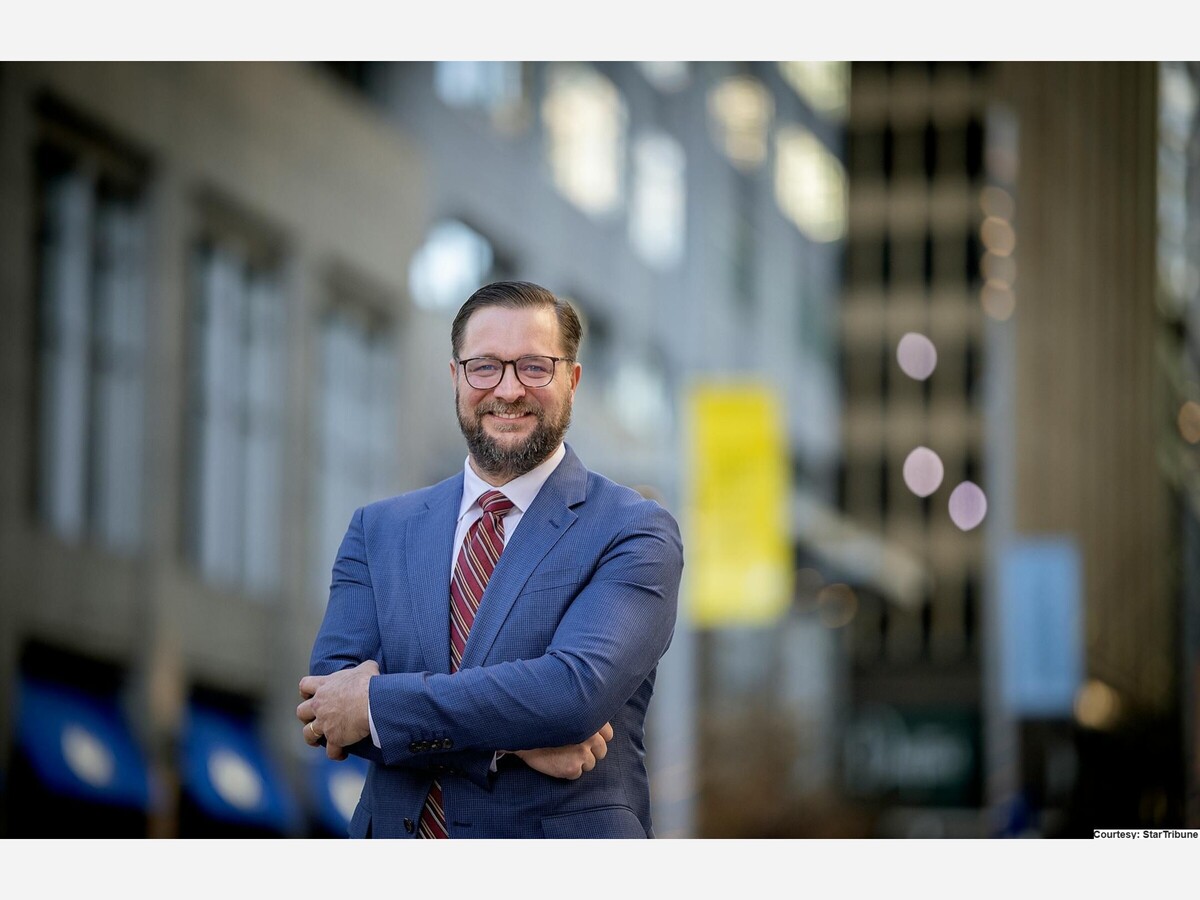Image


MINNEAPOLIMEDIA COMMUNITY INTERVIEW SERIES | A Conversation with Adam Duininck, President & CEO of the Minneapolis Downtown Council & Downtown Improvement District
Interview by Tom Akaolisa | August 5, 2025
Introduction
Few leaders embody the intersection of labor, policy, and urban development quite like Adam Duininck.
As President & CEO of the Minneapolis Downtown Council (MDC) and Downtown Improvement District (DID), Duininck draws on a career that spans construction, labor advocacy, regional transit leadership, and nonprofit management. His unique perspective positions him at the center of Minneapolis’ ongoing efforts to reimagine its downtown as an inclusive, vibrant, and resilient core for the entire region.
On August 5, 2025, MinneapoliMedia sat down with Duininck as part of our Community Interview Series. What follows is an in-depth conversation about his journey, the challenges and opportunities facing downtown Minneapolis, and his vision for the future.
Tom Akaolisa (Tom): Adam, your career has been defined by building bridges—literally in construction and figuratively in labor, politics, and policy. How have those experiences shaped your approach to leading the Downtown Council and DID today?
Adam Duininck (Adam): That’s a great question. I’ve always considered myself a builder—whether it’s physical infrastructure, coalitions, or communities. I grew up in a rural part of Minnesota, but I always knew I wanted to be part of a city’s fabric. Minneapolis was that place for me.
I started out in construction, working as a heavy equipment operator in my family’s civil construction business. From there, I moved into union leadership and legislative advocacy, eventually becoming chair of the Metropolitan Council under Governor Dayton. Each of those roles taught me the importance of connecting people—labor and business, policymakers and residents, city and suburbs.
When this role opened, Minneapolis was at an inflection point. We’d faced a pandemic, the murder of George Floyd, public safety challenges, and economic uncertainty. I felt compelled to bring my background in both labor and policy to help guide downtown forward.
Tom: Minneapolis has faced unique challenges over the past five years—slow pandemic recovery, safety concerns, and economic shifts. What’s your perspective on where downtown stands today?
Adam: The truth is, Minneapolis was slower to rebound than other cities. Commercial vacancies remain high, and the vibrancy hasn’t fully returned. But we’ve turned a corner. Major employers like Target, U.S. Bank, and Thrivent stayed committed to downtown. Many even consolidated operations here. That speaks volumes.
We’re now focused on building on our strengths—reimagining vacant office space, exploring conversions to residential, and activating public spaces like Nicollet Mall and the riverfront. The momentum is real, and the business community has stepped up in a big way.
Tom: Inclusivity and equity are central to your vision. How does your work at MDC connect underserved communities to opportunity?
Adam: At its core, it’s about jobs. We need to connect residents—especially those historically left out—with pathways into good-paying careers. Whether it’s construction trades, advanced manufacturing, or hospitality, the goal is upward mobility and wealth-building.
On housing, we’re intentional about advocating for affordability alongside new development. That means pushing for inclusionary zoning, ensuring tax-credit projects deliver accessible units, and spreading affordable housing throughout all downtown neighborhoods—not just concentrated pockets. A vibrant downtown requires diverse housing options for everyone, from baristas to business executives.
Tom: Public safety remains top of mind for many. How are the Downtown Council and DID addressing this concern while balancing compassion for vulnerable populations?
Adam: Safety and vibrancy go hand in hand. Our DID Ambassadors, outreach workers, and cleaning crews are the frontline presence downtown. But safety isn’t just policing—it’s partnerships. We work closely with Hennepin County, shelters, and service providers to connect people experiencing homelessness with resources.
Our long-range vision is zero homelessness. While we’re not there yet, Minneapolis is one of only a few U.S. cities where homelessness has declined or remained stable. That’s significant progress, and it reflects the compassionate, collaborative approach we’re committed to.
Tom: Beyond major projects, what are some of the smaller initiatives making downtown more welcoming today?
Adam: The basics matter most—keeping streets clean, safe, and green. Our Ambassadors play a huge role in that. We’re also working to make it easier to do business here, whether that’s opening a new restaurant, filling a Skyway storefront, or supporting existing small businesses.
We’re digging into data, understanding vacancies, and actively recruiting businesses downtown. At the same time, we’re partnering with institutions like Hennepin Healthcare and cultural anchors like First Avenue to strengthen downtown’s identity as a hub of work, arts, health, and entertainment.
Tom: The Downtown by Design 2035 plan outlines an ambitious vision. How are residents’ voices reflected in that strategy?
Adam: Inclusivity is baked into the plan. Over 200 community members—from North and South Minneapolis residents to business and civic leaders—participated in shaping it. We continue that engagement today, especially as we explore expanding DID services to residential neighborhoods.
The key is balance: bringing residents into the conversation while also ensuring businesses thrive. Both are essential to a sustainable downtown.
Tom: What’s your message to a Minneapolis resident who hasn’t been downtown in years and might be hesitant to return?
Adam: Come spend a day here. Visit the farmers market, grab lunch, walk through Nicollet, catch a show, or explore the riverfront. You’ll see both the challenges and the tremendous progress.
Downtown is evolving—it’s busier, more vibrant, and on an upward trajectory. Whether it’s record-breaking Timberwolves and Lynx crowds, booming concert attendance, or families enjoying Commons Park, the energy is undeniable. Don’t just take our word for it—come see it for yourself.
Conclusion
Tom: Adam, thank you for sharing your journey, insights, and vision with us. Your leadership during this pivotal moment for Minneapolis is deeply appreciated.
Adam: It was a pleasure speaking with you, Tom.
Interview conducted by Tom Akaolisa for MinneapoliMedia’s Community Interview Series.